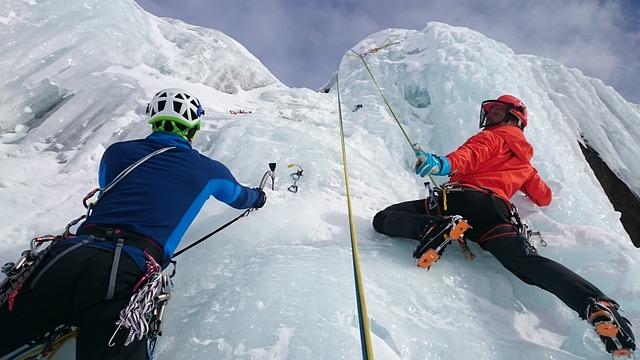When embarking on an adrenaline-fueled adventure, whether it’s scaling towering peaks or diving into the depths of the ocean, the thrill of extreme sports is unparalleled. However, with great excitement comes inherent risk, making travel insurance a crucial consideration for any extreme sports enthusiast. Understanding the nuances of travel insurance specifically tailored for these high-octane activities is essential to ensure not only peace of mind but also comprehensive protection. In this article, we will guide you through the key aspects of travel insurance for extreme sports, from coverage specifics to policy exclusions, empowering you to make informed decisions and fully enjoy your adventures with confidence.
Understanding Coverage Options for Extreme Sports
When embarking on adrenaline-pumping adventures, it’s crucial to understand the nuances of insurance policies designed specifically for high-risk activities. Travel insurance for extreme sports often offers specialized coverage that standard policies do not. It’s essential to ensure your chosen plan includes:
- Medical Expenses: Coverage for injuries sustained during your adventure, including emergency medical evacuation if necessary.
- Equipment Loss or Damage: Protection for your expensive gear, which might not be covered under general travel insurance.
- Personal Liability: Safeguards against legal responsibilities if you accidentally injure someone else or damage property.
Consider the policy’s exclusions, as many insurers might not cover activities deemed too dangerous, such as base jumping or heli-skiing. It’s wise to read the fine print and, if needed, speak with a representative to clarify any doubts. This preparation ensures you’re not caught off-guard by unforeseen expenses while chasing thrills.

Evaluating Policy Limits and Exclusions for Maximum Safety
When it comes to travel insurance for extreme sports, understanding the policy limits and exclusions is crucial for ensuring maximum safety. Extreme sports often involve higher risks, which means that not all activities are covered under a standard travel insurance policy. As you review potential insurance plans, pay close attention to the specific activities included. Some policies may cover activities like skiing or scuba diving but exclude more hazardous pursuits such as base jumping or rock climbing.
- Activity Inclusions: Verify which sports are explicitly covered. This is especially important for niche activities.
- Exclusion Clauses: Look for any clauses that might exclude certain situations, such as injuries sustained while under the influence of alcohol or drugs.
- Coverage Limits: Check the maximum payout for medical expenses and evacuation costs. Ensure these limits are adequate for the regions and activities you plan to explore.
Being aware of these details not only helps in selecting the right policy but also empowers you to make informed decisions during your adventures. Always opt for a policy that is transparent and comprehensive, ensuring peace of mind as you pursue your passion for extreme sports.

Key Factors to Consider When Choosing a Provider
When diving into the world of extreme sports, selecting the right travel insurance provider is crucial. It’s important to ensure that the provider offers comprehensive coverage tailored specifically for high-risk activities. Look for policies that explicitly mention the extreme sports you plan to participate in, as not all insurers cover these activities by default. Pay close attention to the exclusions section, as some policies may have limitations on certain sports or require additional premiums for full coverage.
- Claim Process: Choose a provider with a straightforward and efficient claims process. Look for reviews and testimonials to gauge their reputation in handling claims.
- Emergency Support: Ensure the provider offers 24/7 emergency assistance. This is critical when engaging in activities in remote or challenging environments.
- Medical Coverage: Verify the extent of medical coverage, including evacuation costs, as injuries from extreme sports can require specialized treatment.
Additionally, consider the provider’s global network and ability to offer support in various locations worldwide. A well-established network can make a significant difference in the quality and speed of service you receive. Remember, when it comes to extreme sports, peace of mind is just as important as the thrill of the adventure.

Expert Tips for Filing Claims in High-Risk Activities
Engaging in high-risk activities can be exhilarating, but filing claims when things go awry requires a strategic approach. Here are some expert tips to navigate this process smoothly:
- Understand Your Coverage: Before embarking on your adventure, review your policy details meticulously. Ensure that the extreme sports you plan to engage in are covered. Some policies may require additional riders for specific activities like skydiving or mountaineering.
- Document Everything: In the event of an incident, documentation is key. Take photos, gather witness statements, and keep all receipts related to medical treatments or equipment damage. This evidence will be invaluable when substantiating your claim.
- Notify Your Insurer Promptly: Time is of the essence. Contact your insurance provider as soon as possible to report the incident. Delays can complicate the claims process and may even result in denial of coverage.
- Follow Medical Advice: Adhering to prescribed treatments and attending follow-up appointments demonstrates compliance and seriousness about recovery, which can support your claim.
By being proactive and well-prepared, you can ensure that your claims process is as seamless as your adventurous pursuits.

